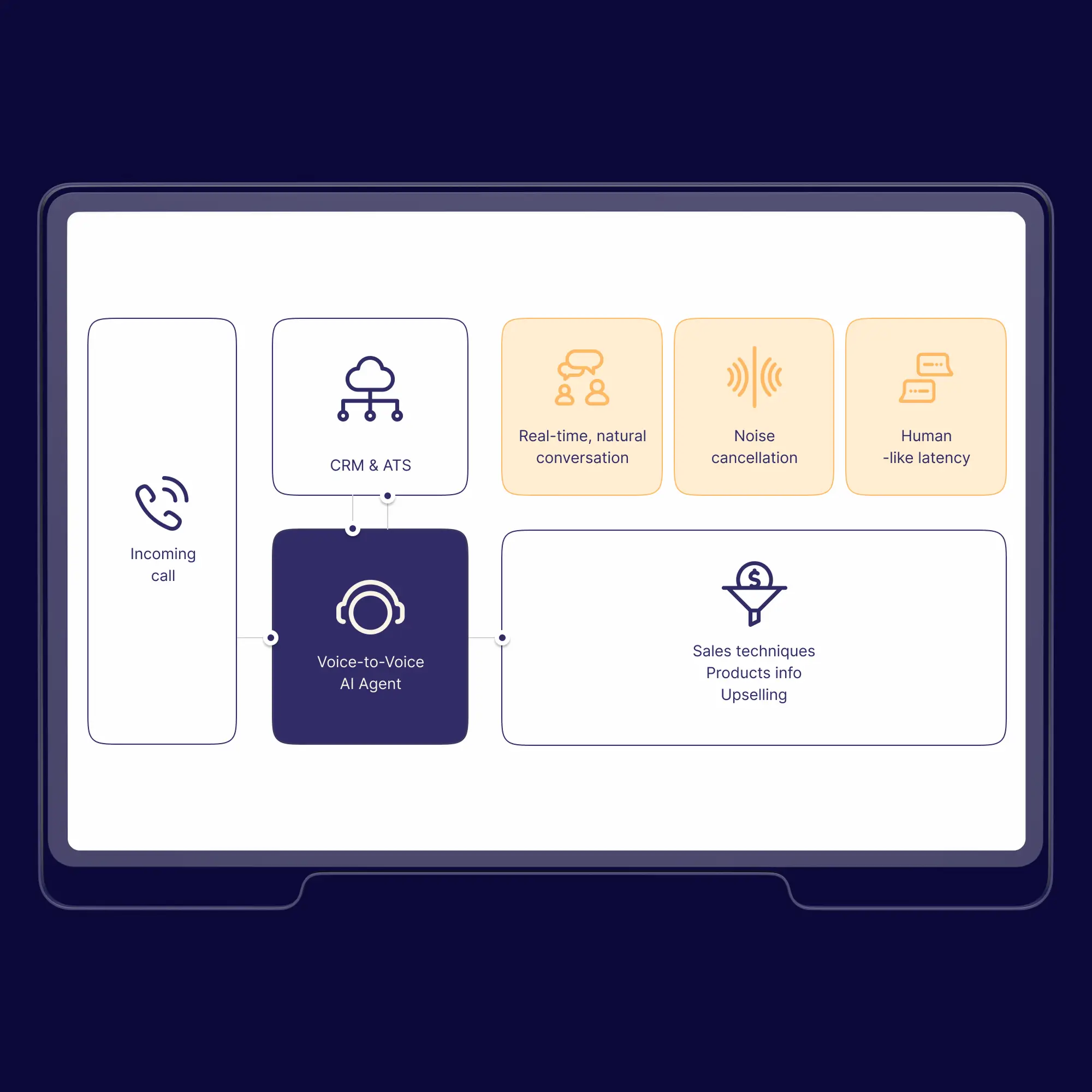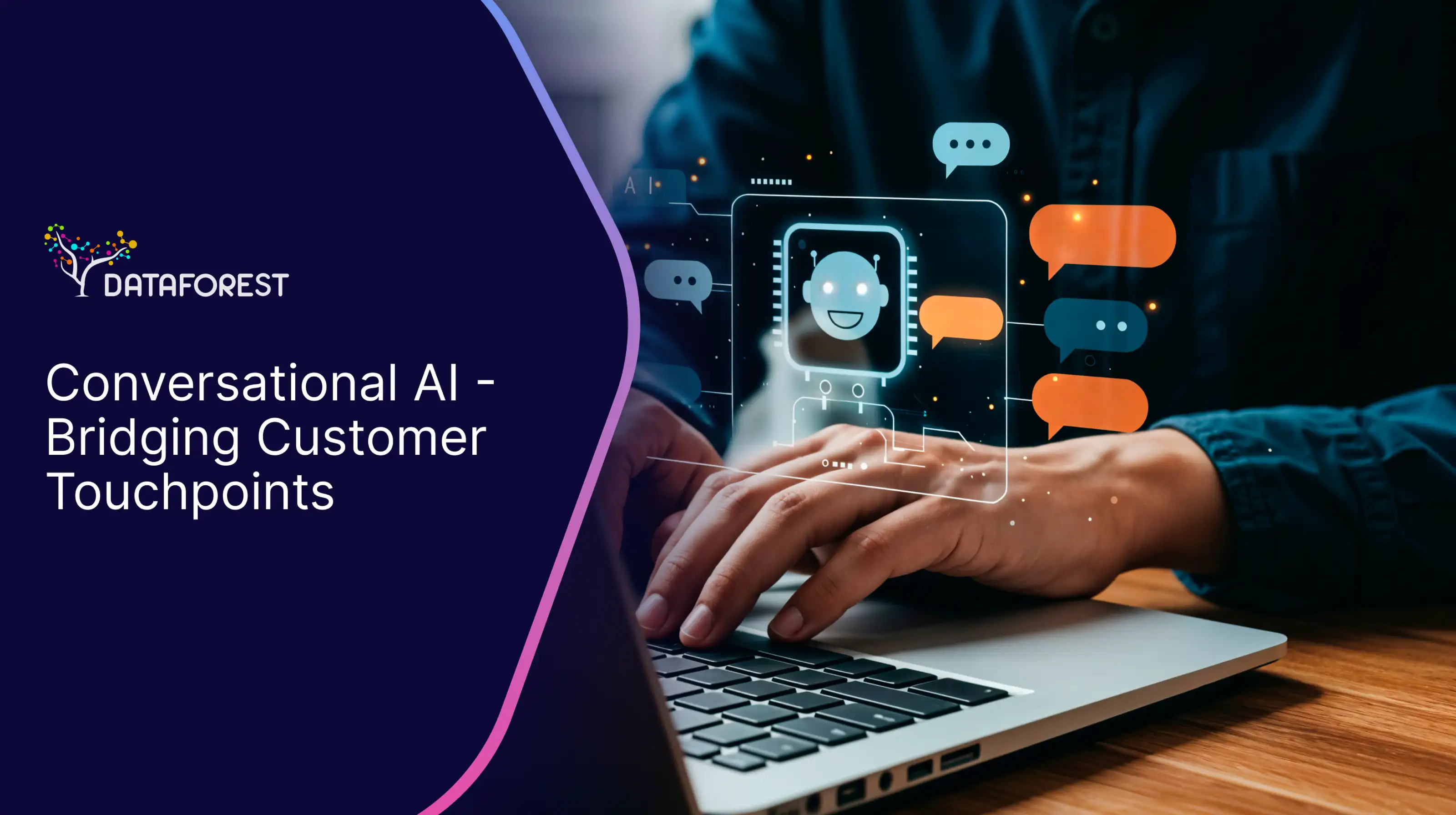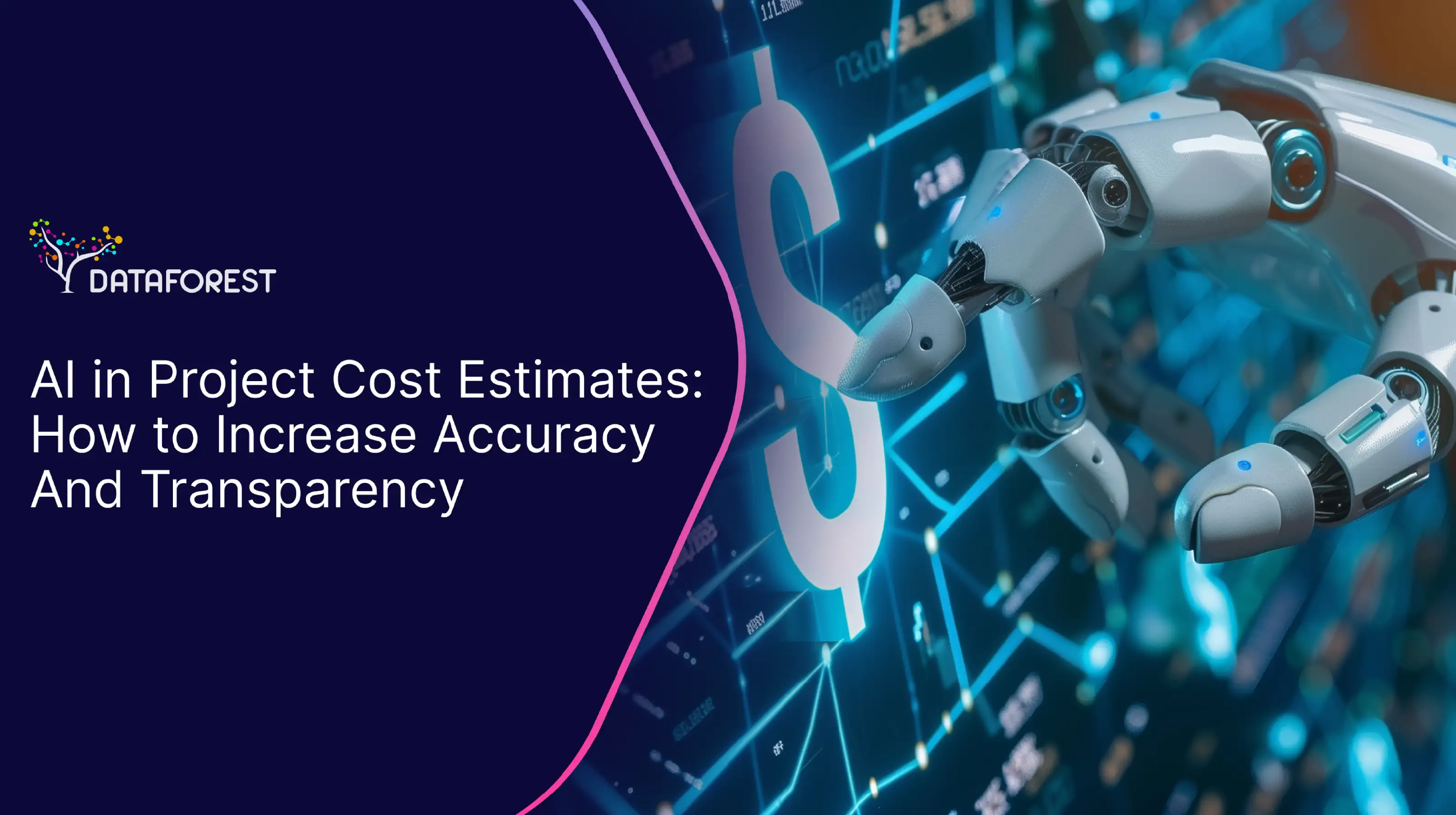An e-commerce firm used AI/ML integration and multimodal AI in visual embodied AI agents to handle customer service inquiries across time zones. Shoppers received instant answers to sizing questions and order updates, eliminating the need to wait for live agents. Response times dropped from hours to seconds, and support costs fell by 60%. DATAFOREST will do the same—just arrange a call.

What Are Embodied AI Agents?
The McKinsey article discusses how embodied AI agents are pushing robotics and automation beyond factories into Industry 4.0 and general-purpose applications. It highlights the rise of humanoid robot production and the integration of vision-language-action multimodal AI models that enable robots to better perceive and act in real-world environments. They are systems that see their surroundings and act on them without waiting for human input—true physical AI systems blending computer vision and perception with action.
From Code to Physical Capability
AI lives inside servers. It reads text, generates images, and answers questions. But it never touches anything. An embodied AI agent is different—it's an AI embodiment in motion. It runs on machines that move, grab, navigate, or manipulate objects. The system takes in sensor data—cameras, LIDAR, and pressure readings—and determines the next course of action in real time. This isn't pre-programmed automation. The embodied AI agent adapts to what it sees. If an object shifts or an obstacle appears, the system adjusts without stopping for new instructions—driving operational efficiency with AI in dynamic environments.
What Makes Embodied AI Agents Different
Three things set embodied AI agents apart:
- Perception—They use sensor-based AI, vision, touch, or spatial sensors to understand their surroundings.
- Decision-making— They choose actions based on goals, not scripts, leveraging reinforcement learning and intelligent automation in enterprises.
- Physical output—They move, manipulate, or interact with the environment directly.
Standard software can't do this. A chatbot doesn't need to know its location or what's in front of it. An embodied AI agent does, constantly. The challenge is integration. Sensors must feed models that trigger motors with millisecond precision. One weak link breaks the chain.
Where They're Already Working
- Warehouses use mobile embodied AI agents to transport goods between stations. They dodge forklifts and reroute around spills without human input, powered by real-time analytics.
- Hospitals deploy disinfection embodied AI agents that navigate hallways, avoid patients, and sanitize rooms overnight—part of the digital transformation strategy in healthcare.
- Farms operate autonomous harvesters—robotic embodied AI agents— that identify ripe crops using computer vision and perception and adjust grip pressure to prevent bruising.
- Retail stores are testing shelf-scanning embodied AI agents that check inventory, flag misplaced items, and update stock levels in real-time via data infrastructure for AI.
- Banks and telecom companies run avatars—virtual embodied AI agents—for customer support. The avatar uses natural language processing to appear on screen, answer questions, and process requests seamlessly.
Each case represents AI in enterprise innovation, replacing tasks that once required people to be physically present.
Why Should Enterprises Care About Embodied AI Agents?
Labor costs rise every year. Talent is hard to find and harder to keep. Enterprise AI adoption removes those constraints without replacing strategy with hope. Embodied AI agents powered by AI-driven automation redefine what scalability looks like.
When It Changes How You Compete
Companies can hire people to do physical work. That's no longer a competitive edge. The question is whether operations can scale without adding headcount at the same rate. Embodied AI agents break that link. A warehouse robot works three shifts without overtime. An avatar handles inquiries in twelve time zones without jet lag or burnout. Competitors who deploy embodied AI agents first move faster and at a lower cost. Late adopters spend years catching up while paying more for the same output. This is about whether operations become a limiting factor or a growth engine.
Where the Real Advantage Shows Up
Three areas matter:
- Speed — Tasks that took hours now take minutes, with no waiting for shifts to change
- Consistency — Performance doesn't vary by mood, fatigue, or turnover
- Risk reduction — Dangerous or repetitive work moves off the liability sheet
Traditional automation handled simple, repeating actions. An embodied AI anent adapts to variation. A pallet in the wrong spot doesn't stop the system from functioning. A customer question outside the script is still answered. The gap between companies using embodied AI agents and those avoiding them is widening rapidly. Early wins fund further deployment. Delays compound into structural cost disadvantages.
What the Numbers Look Like
A mid-sized retailer deployed shelf-scanning embodied AI agents across 50 stores. Inventory accuracy went from 87% to 98%. Stockouts dropped by half. Payback happened in 14 months.
A logistics provider replaced manual sorting in one facility with embodied AI agents. Throughput increased 35% with the same floor space. Workplace injuries fell to near zero in that zone.
An insurance company launched an avatar—an embodied AI agent—for claims intake. Call wait times dropped from 12 minutes to under one. Staffing costs for that function fell 40% year-over-year.
None of these required breakthroughs. The technology exists and works. The question is whether leadership moves before the cost gap becomes unrecoverable.
How Do Embodied AI Agents Work?
The systems require three key components: sensors to gather information, models to determine the next course of action, and hardware to execute the decisions. Miss one piece and the whole thing fails.
What Makes the System Function?
An embodied AI agent operates through perception, decision-making, and action—all of which occur in a continuous loop. Cameras, LIDAR, or tactile sensors feed raw data into the system. Computer vision models interpret that data, including where objects are, what they are, and whether they're moving.
The decision layer takes over next. Machine learning models—often trained on millions of examples—choose the following action based on goals. Should the robot grip tighter? Reroute around an obstacle? Wait for a person to pass?
Then, motors, actuators, or servos execute. The system moves an arm, adjusts speed, or changes direction. Feedback from sensors confirms whether the process was successful. If not, the loop repeats with adjustments.
This all happens fast—sometimes dozens of times per second. Latency kills performance. A robot that hesitates or miscalculates is likely to crash into objects or drop them. The tight integration between hardware and software determines whether the embodied AI agent functions effectively or merely appears impressive in demonstrations.
Why External Data Matters More Than You'd Think
Training embodied AI agents requires massive datasets. A robot learning to pick objects requires thousands of images that show different shapes, lighting conditions, and angles. An avatar handling customer questions needs transcripts of honest conversations, not hypothetical ones.
Companies don't have that data sitting around. Web scraping for AI fills the gap. Public datasets, product catalogs, and user-generated content feed data-driven AI development pipelines. Without it, models stay generic and fail in specific contexts.
Analytics layers run on top. They track which tasks succeed, where failures cluster, and how performance drifts over time. If a warehouse embodied AI agent starts missing certain package types, analytics flags the issue before the problem escalates.
Data also keeps embodied AI agents current. Products change, layouts shift, and customer language evolves. Scraping updated information and retraining models prevents obsolescence. Systems that can't adapt lose value fast, sometimes within months of deployment.
Embodied AI Agents—Challenges Beneath the Surface
Sensors fail in real conditions, batteries drain faster than specs promise, and coordination lags cause errors. The embodied AI agent technology struggles in environments where lighting conditions fluctuate and obstacles appear unexpectedly. Organizations are not yet ready to work alongside machines that make decisions autonomously, as trust, accountability, and monitoring frameworks do not yet exist.
We can consider your case—just schedule a call.
Where Is Embodied AI Headed?
Embodied AI agent systems react to what they see. The next generation anticipates problems before they happen.
From Response to Anticipation
Today's embodied AI agents wait for input. A robot sees a box and picks it up. An avatar hears a question and answers it. The system responds but doesn't predict. The shift is toward anticipation. Machines that recognize patterns before they complete. A warehouse robot (embodied AI agent) that reroutes before congestion builds, not after. An avatar that offers help based on hesitation, not explicit requests.
This requires memory and context. Systems need to track what happened yesterday, last week, and last month. They compare current conditions to historical patterns and flag deviations early. Predictive maintenance becomes standard. Embodied AI agents monitor their own performance and request service before a breakdown occurs. Downtime drops because failures get intercepted.
But anticipation adds complexity: more data to process, more decisions to explain, and more ways for the system to guess wrong and create problems instead of solving them.
Why Going It Alone Rarely Works
Companies don't have the internal capability to deploy embodied AI agents successfully. Building perception models, integrating sensors, and training systems on proprietary data—each of these tasks requires specialized skills that take years to develop. Partnerships close that gap faster. Data-driven providers bring experience from previous deployments. They know which sensor configurations fail and which scale. They've debugged edge cases that typically don't appear until the third month of production.
DATAFOREST builds the infrastructure most companies don't have in-house: data pipelines, model training, and cross-system integration. We've deployed embodied AI agents before, which means fewer surprises when edge cases surface in production. Quality matters—we clean and structure data so models train on reality, not noise. Integration extends beyond the AI layer into workflows, monitoring, and process changes that determine whether deployment succeeds or stalls. Speed improves because the scaffolding already exists—deploy in quarters instead of years. Risk decreases when expertise is transferred from previous projects, keeping budgets predictable and mistakes rare. Leadership gains clarity on costs and outcomes, rather than vague promises about innovation.
Collaboration doesn't mean an outsourcing strategy. It means not wasting time reinventing infrastructure that already exists. Focus internal resources on what's unique to the business.
Embodied AI Agents—Turning Vision into Action
The technology works—robots move boxes, avatars answer questions, systems run without constant human oversight. But working technology isn't the same as working implementation. Most failures happen because organizations deploy before they're ready: culture resists, processes clash, and accountability vanishes when something breaks.
Start small. Pick one repetitive task that costs too much or creates too much risk. Deploy an embodied AI agent there. Learn what breaks. Fix it before scaling. The companies that win are those that match their capabilities to needs, deploy without fanfare, and iterate when reality diverges from the plan. Vision without execution is just expensive theater.
Please complete the form to put embodied AI agents in your business.
FAQ About Embodied AI Agents
How can embodied AI agents reshape competitive strategy in data-driven industries?
Embodied AI agents remove labor as a scaling constraint. Companies can grow output without proportional headcount increases. Competitors who deploy embodied AI agents first build cost structures that others can't match.
What role does an embodied AI agent play in creating intelligent digital ecosystems?
An embodied AI agent closes the loop between digital decisions and physical outcomes. A system can sense conditions, decide actions, and execute—all without breaking the chain. Data flows from the real world back into models that are continually improved over time.
Can embodied AI agents accelerate sustainability or ESG initiatives within enterprises?
Embodied AI agents reduce waste by optimizing routes, lowering energy consumption, and preventing overproduction. Precision improves—robots don't overspray, overpack, or misjudge quantities the way humans do when rushed. Reporting becomes easier because sensors automatically track resource consumption.
How can enterprises effectively integrate embodied AI agents with their existing automation or IoT investments?
Sensors already installed feed perception models. Conveyor systems and robotics integrate through standard protocols. The embodied AI agent layer adds decision-making on top of infrastructure that's already paid for.
How can embodied AI agents complement human teams rather than replace them?
Embodied AI agents handle repetitive tasks that can drain focus and increase the risk of injury. Humans shift to exception handling, quality judgment, and problems that need creativity. Teams become smaller but more productive because dull work is removed from their plate.







.svg)
.webp)















